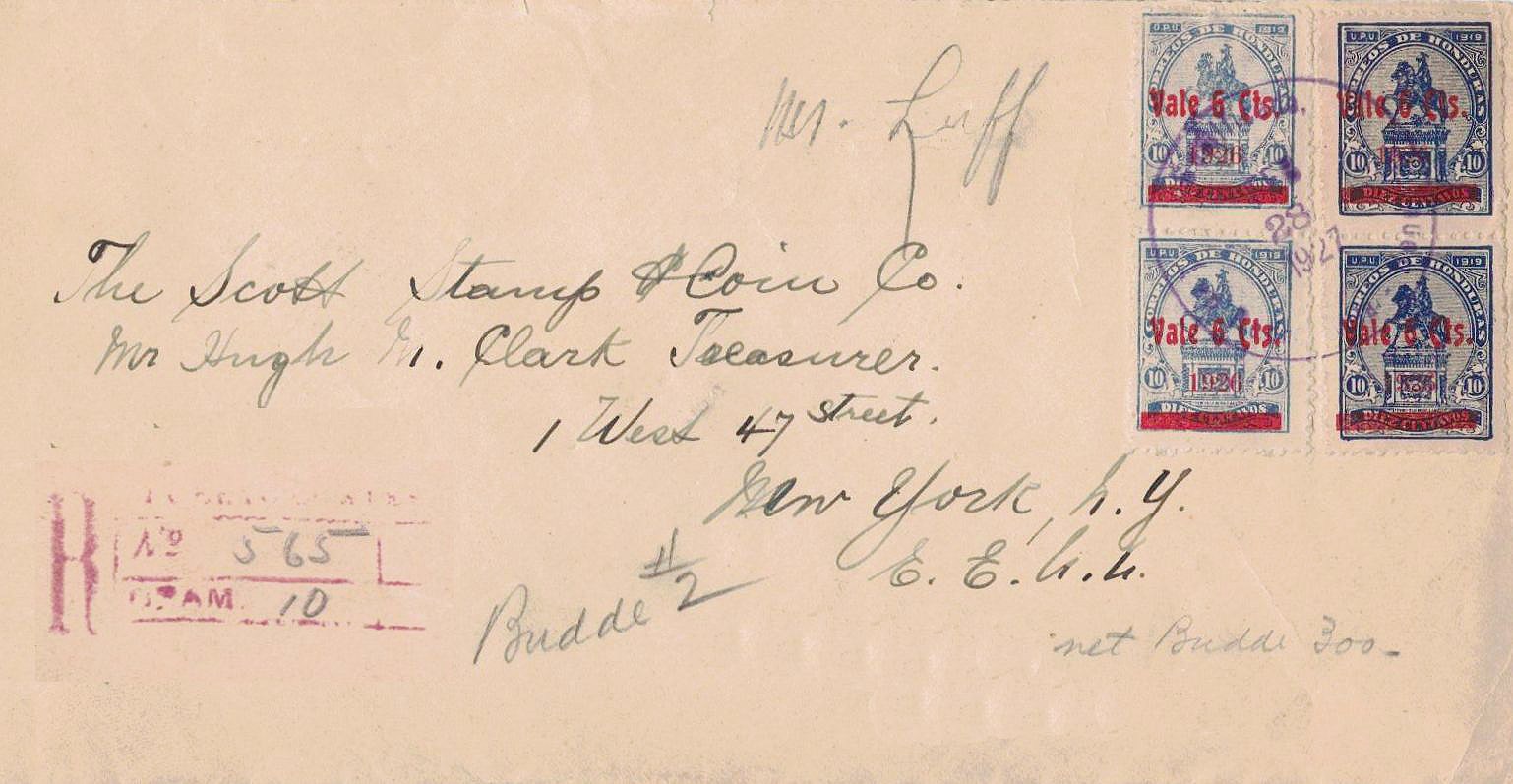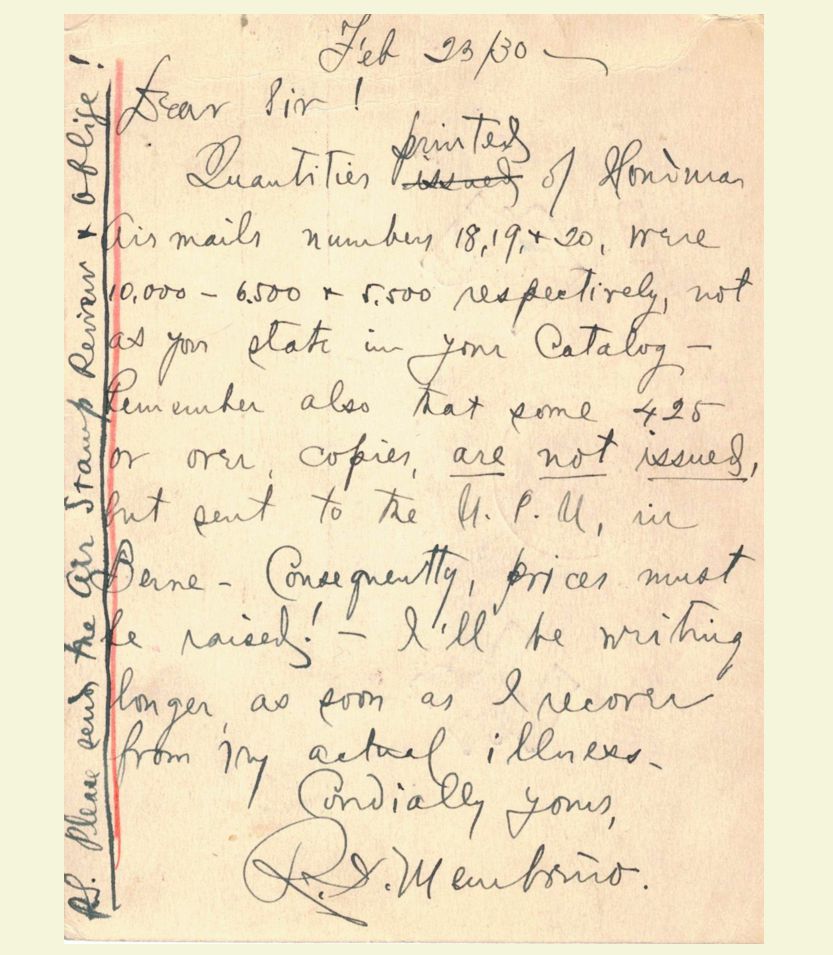A FEW TIPS
Surcharges atop Surcharges!
Surcharges become a confusing problem particularly in Honduran airmail stamps from 1931 to 1935. When you run into these, don't fret. They are described in detail and a key to the types is HERE.
What about all the Counterfeits?
Most collectors have a strict definition of counterfeit. --a stamp produced privately by a non-governmental source made to look like a genuine stamp. There are Honduran counterfeits according to this definition, for example, the First issue, the Arías issue and the Train issue. This definition is extended to include surcharges similarly placed on genuine stamps. Generally, that works out OK and such counterfeits will be addressed with each issue. But in Honduras we have to add another category.
Without going into a detailed analysis of the historical problems Honduras faced, the nation has been controlled by a tightly-knit privileged class largely on the payroll of American corporations. Positions in government were filled with pals of the privileged class looking to increase their wealth --not serve the public interest.
Thus, Honduran mint stamps became a commodity sold by tens of thousands directly to foreign buyers by such pals of the privileged. One postal supervisor named Duron (he was actually a dentist!) even directed his employees to make specific printing "mistakes" that he sold directly to employees of the Scott company in New York through correspondance, passing them off as genuine errors. These "mistakes" were added by the hundreds and hundreds at premium prices to the company's stamp catalog where, sadly, they remain and disgrace philately to this day.

Price negotiations cover referred to Mr. Luff from his Honduran sources.

Here is a card Duron posted to the editors of the Lissiuk airmail catalog.
He complains how their prices are too low! The give away is Duron's second thoughts about using the word "issued" for his "printings."

Here is the catalog page upsetting Duron.
How do we distinguish the commodity stamps from genuine postage stamps? It has been traditional to call them all genuine if there was any sort of governmental decree published to authorize them. This still rings true with the uninformed because "it has a number in the Scott catalog." But in reality, with most Honduran classic stamps, mint means commodity shipped for a profit directly to a gringo stamp peddler. Sometimes, they were sold after the stamps were withdrawn and stored; sometimes, sold directly to Mr. Luff in New York, hot off the press in Honduras.
Therefore, if you want to collect real postage stamps that felt the hands of real Honduran mail people; you have two choices. 1, collect stamps on genuine dated covers with contemporary cancels; or 2, collect single stamps with partial cancels that are both recognizable and contemporary.
But don't fret. Very few do either 1 or 2. Honduran philately still suffers Anglo-American bias and condescension. Most bidders run after mint stamps and even swoon for NH!
And many, if not most of these are counterfeit sold as genuine. For example... from April 15, 1923 to July 15, 1923, fifteen mint one peso train stamps were sold as genuine either individually or in small sets on ebay. Not one. That's right. Not one ever saw the shores of Honduras. Of course that includes the sales of matthijs of Belgium. He specializes in such counterfeit train stamps. In the past eighteen months they have sold close to 120 Stripes train counterfeit mint sets as "good stamps." Buyer Beware. Recently moving into Arías frauds.

